As some of you may or may not know, my garden spot is rather small. Minuscule, even. I cram an awful lot in there and push the ol’ boy to his limits. That’s right, my garden is a “he.” Ships are girls and gardens are boys. Look it up. It’s science. So this year, since space is at a premium, I decided to give container gardening a go. Also, I wanted to try out an array of new carrot varieties.
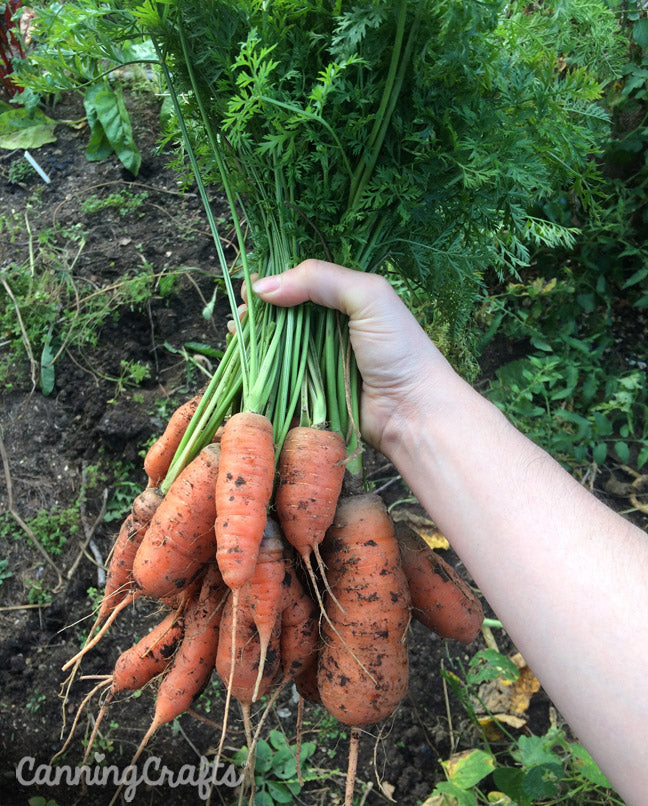
The first step is to find a receptacle for your garden to grow in. For carrots, you really only need it to be about one to one-and-a-half feet deep. I found a Christmas tree storage container that is going to be perfect for growing carrots. My husband even decorated it with some fun carrot doodles (more on that later). It is large enough to accommodate the quantity I plan on growing, but is still small enough to be mobile, if necessary. I drilled more than a dozen 1/4” holes on the bottom for proper drainage. I then placed newspaper inside on the bottom of the container before filling with soil. This will make sure that it doesn’t create a muddy mess all over my porch.
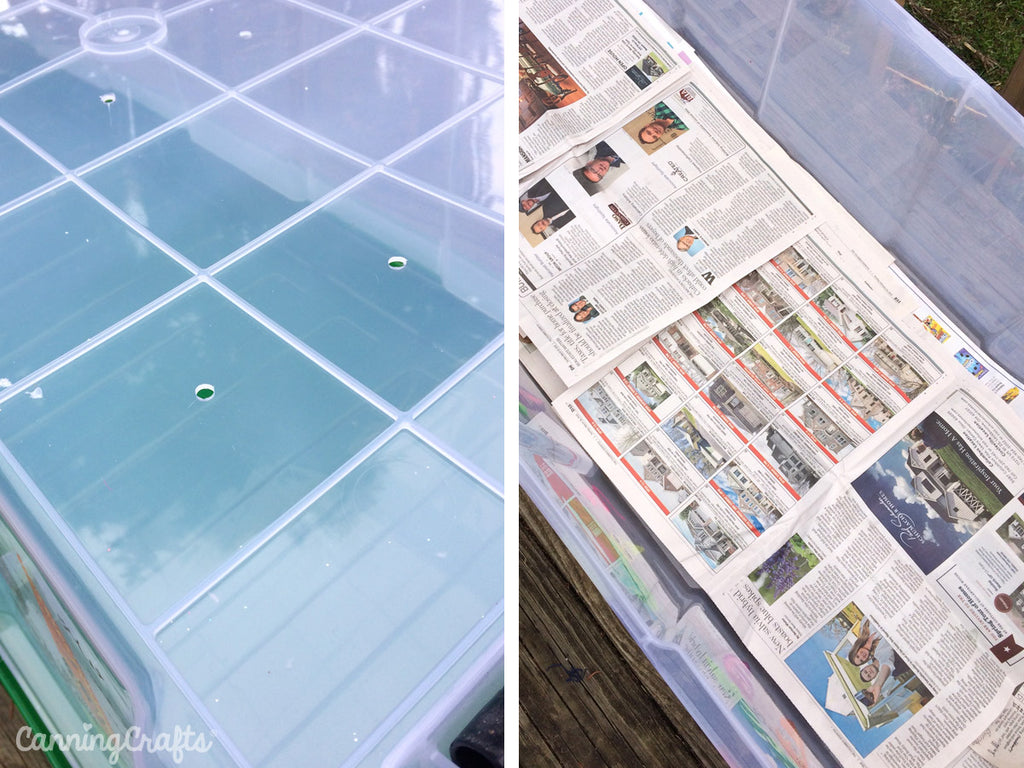
You need a loose and light soil mix for carrots to flourish. A soil that isn’t compacted will allow your carrots to grow longer. I am using a near equal combination of sphagnum peat moss, perlite, and compost. There are other alternatives you can try as well, which I'll list later. Why make your own soil instead of buying a convenient bagged mix? The cost is much less to make your own. PLUS, there's the added benefit of knowing exactly what's in it. So you can tailor your mix for specific foods that you grow.

Sphagnum Peat Moss
Peat moss is sought after because of its ability to retain several times its weight in moisture. It releases moisture to plant roots as needed. Peat moss is widely available to buy and is inexpensive. Coco coir (the fibrous material around the shell of a coconut) is also a very good option in place of peat moss.
Perlite or Vermiculite
Perlite is a volcanic glass/ash that's used to aerate the soil and keep it well draining. It can hold 3-4 times it's weight in water without becoming soggy. It's sterile and pH-neutral and doesn't break down easily. Vermiculite is a mineral that's expanded in a furnace, making it lightweight. It adds aeration to soil and retains nutrients. It must, however, be handled gently. If handled roughly, it will compact and lose the ability to hold air. Vermiculite holds water, contains calcium and magnesium, and is almost pH-neutral. I opted to go with perlite for my container instead of vermiculite due to cost. Perlite is much less expensive.
Compost, aka "Black Gold"
Compost adds lots of nutrients to the mix. In fact, it's one of the best fertilizers around. Compost is a good source of nitrogen, phosphorous, and potassium. The nutrients in compost are slowly released. The micronutrients in compost are essential for plant growth. Compost retains moisture, and improves the chemical, physical, and biological quality of soil. Overall, compost creates a better environment for plant roots. My compost needed sifted since it was a little chunky in it’s current state. There were avocado pits and bits that hadn't broken down yet. It needed to be much finer in texture to accommodate carrots. After all, I was after long carrots. So I wanted to avoid any obstacles in the soil that may impeded their growth.

Alternative & Eco-Friendly Soil Mixes
Peat moss, perlite, and vermiculite contribute to pollution when mined, processed, and packaged. There are several alternative and more eco-friendly potting soil ingredients you can try. Peat moss comes from wetland bogs which help sequester carbon. It grows slow, so increased demand may encourage over harvesting. So conservation of peat bogs is as important as protecting the rainforests. Composted tree bark, wood chips, and rotted leaves are good substitutes. And since we're surrounded by trees, most of those ingredients are free!
Alfalfa may be another good option to replace peat moss. It's rich in nitrogen which is slowly released into soil.
Coarse sand (bulider's sand) can replace perlite, a mined ore, to lighten soil and improve drainage. A little sand goes a long way. Adding too much will make the soil heavy. Avoid fine sands which end up making soil dense and heavy too.
Vermiculite naturally contains a small amount of asbestos. Inhaling asbestos fibers is dangerous as they are carcinogenic. You should wear a mask and only use vermiculite in ventilated areas. Wetting it helps the dust from spreading. Pine fines, finely ground pine bark, are a good alternative to vermiculite. Coco coir, ground coconut husk, is also a good replacement. Depending on your location, it may be an exotic ingredient as it comes from India or Central America. Coco coir can hold up to nine times its weight in water and also help aerate the soil.
Many gardeners use their best garden soil amended with compost or composted manure. Clean, commercial top soil would be okay to use as long as it's untreated. I toss old potting soil from houseplants into my compost too. Soil doesn't go BAD, it just becomes lacking in nutrients. So organic matter needs added back into soil over time.
Newspaper is often used in the garden as a natural mulch and weed suppressant. Some gardeners even make potting cups from folded newspapers. Ground up newspaper helps retain moisture and adds organic matter to soil. There has been debate amongst organic gardeners on the safety of using newspaper in soil. Most newspapers use soy inks and bleach paper using hydrogen peroxide instead of chlorine bleach.
Alternative Fertilizers
If your soil mix is lacking in compost, you may consider an organic fertilizer. The fertilizer choice would depend on the base growing mix. And since many fertilizers effect the pH, choose appropriately! Blood meal adds nitrogen and bone meal adds phosphorus. Kelp meal, greensand, or other minerals add minor nutrients. I often hear great things about bat guano, although I've never used it. I have used wood ash in my garden before because my mom claims it's the best. Mom is NEVER wrong. Composted manure is often a fan favorite for gardeners. The pièce de résistance (in my particular case, at least), is my manure fertilizer. That’s because it is “Grade A, 100% Marion Township, Grey Donkey Dung” (a direct quote from my father-in-law). This manure is as near a perfect example of nature’s fertilizer that you are likely to find on God’s green earth. Add organic fertilizers in small amounts or if your plants aren't growing how you want them to.
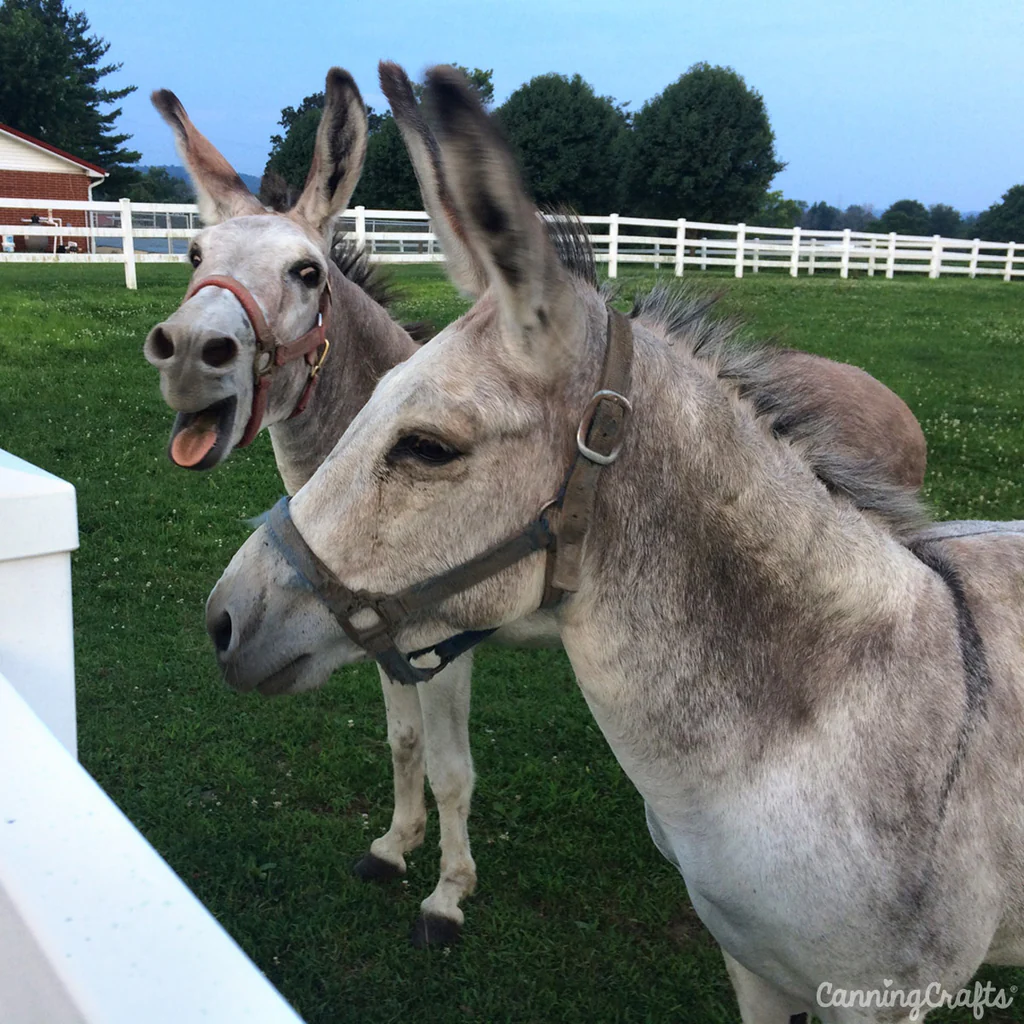
This is Norman and Lady. Their poop is in my garden. And the world's greatest father-in-law drove that poop four hours round trip to my house. And Norman thinks that's hilarious...
Planting Carrots
Planting carrot seeds is as easy as sprinkling the seeds along the surface. They shouldn’t be that far apart from one another, and can even be planted in clusters of three, if you prefer. The seeds should not be planted deep at all, so spread a rather thin layer of your soil mixture overtop. Carrots need a very moist soil to germinate in. This can prove problematic since the top layer of soil will dry out quickly due to evaporation. Some find it easier to pre-water the ground before dropping the seeds. Then watering again after the covering the seeds with soil. Remember to keep an eye on your carrots in these early days, so the ground never goes too dry or becomes a swamp.
Thinning Carrots
Once the seeds germinate and have spouted to a couple inches high, you will need to thin them out. Each remaining carrot should be about an inch apart. The thinning process is very important! Overcrowded carrots won't get the nutrients, moisture, and space needed to thrive. You may need to mound up soil around your carrots that remain, so the roots aren’t exposed.
If you want your carrots to do really well, you may want to thin them a second time after another month. This time try to get them an inch and a half to two inches apart. These little carrots should be substantial enough for you to eat. If careful, you can try transplanting thinned carrots to areas with low germination. Try to get them into the ground as upright as possible—I know, that’s tricky! Remember to cover over the roots so they avoid exposure to sunlight. Once the carrots are about three inches tall, I'll add more compost fertilizer around them.
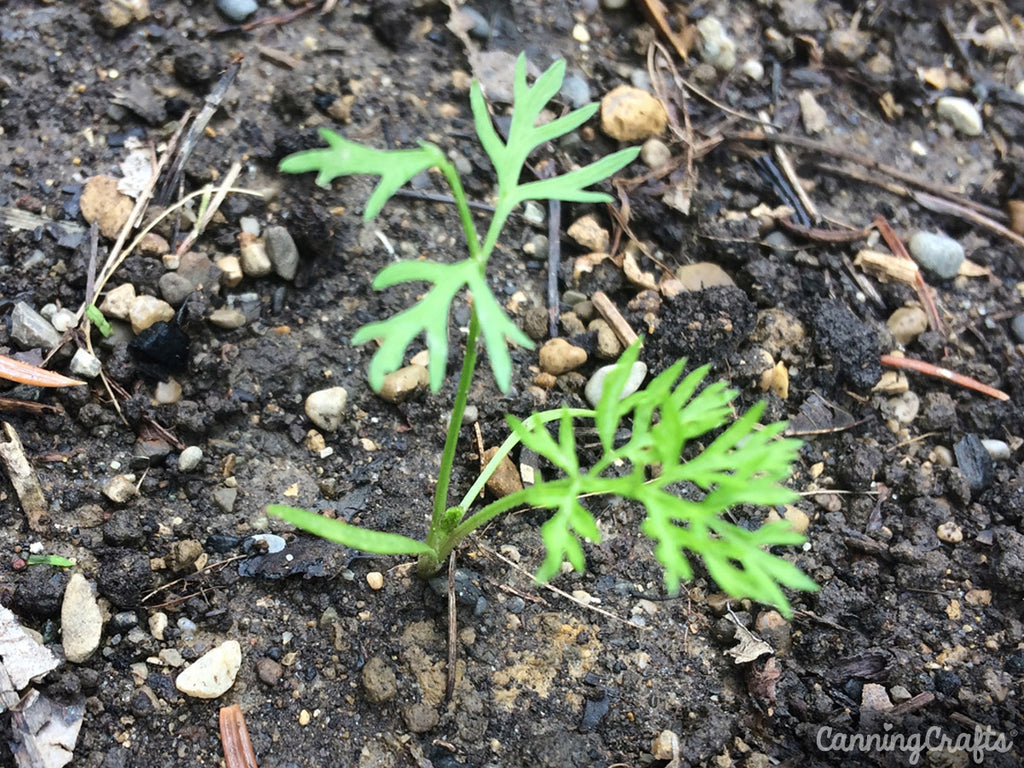
Crazy Carrot Container
Oh yes, before I wrap this up I should mention my husband’s vandalization of the carrot container. I asked for something classy and stylish… and instead I got this! Just kidding! I think this is super cute and love that the soil comes through behind the cartoons. He used acrylic paint markers that will hopefully hold up to the elements. We shall see.


And swallowtail caterpillars are big fans of carrot tops.
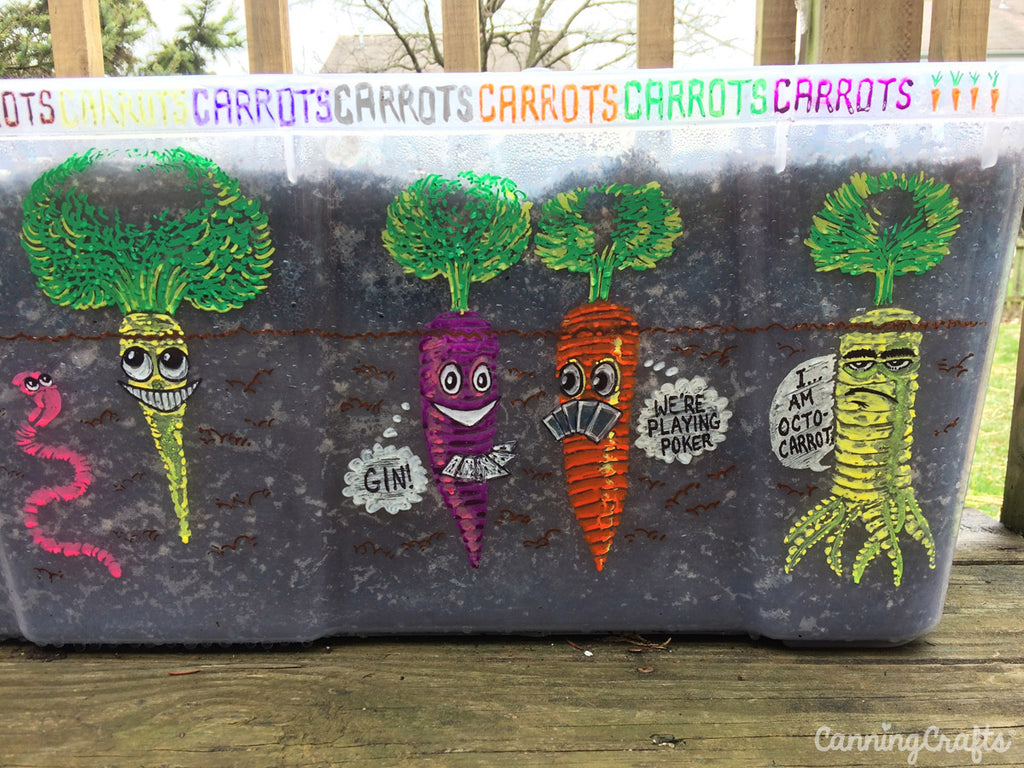
Sometimes I get funky carrots with multiple limbs. I'm hopeful that planting in a container this year will eliminate crazy carrots!
Carrot Deformities & Growing Issues
A proper soil mix free of rocks and debris will ensure long straight carrots. But there are other carrot growing issues that may come up. Splitting happens if there's inadequate moisture or fluctuations in moisture. Carrots need just the right amount of water, about an inch a week during the growing season. The soil should be moist but not waterlogged. Roots will rot if there's too much moisture. If you neglect to water carrots, compensating by overwatering will lead to cracks. Moisture stress causes stunted growth as well. Too much nitrogen can also cause cracking and multiple roots to form.
Overcrowding can cause deformities such as forking and splitting in carrots. Plant and thin according to the seed packet guidelines. Use a loose soil and remove weeds to allow carrots to grow straight. Mulching around carrots will help suppress weeds.
Deformed and cracked carrots are usually still safe to eat. You can cut off damaged portions if they don't look right. I often add deformed carrots to my chicken bone broth.
Overcrowding can cause deformities such as forking and splitting in carrots. Plant and thin according to the seed packet guidelines. Use a loose soil and remove weeds to allow carrots to grow straight. Mulching around carrots will help suppress weeds.
Deformed and cracked carrots are usually still safe to eat. You can cut off damaged portions if they don't look right. I often add deformed carrots to my chicken bone broth.
Of course if you don't want to eat your deformed carrots, you can always PLAY with them!
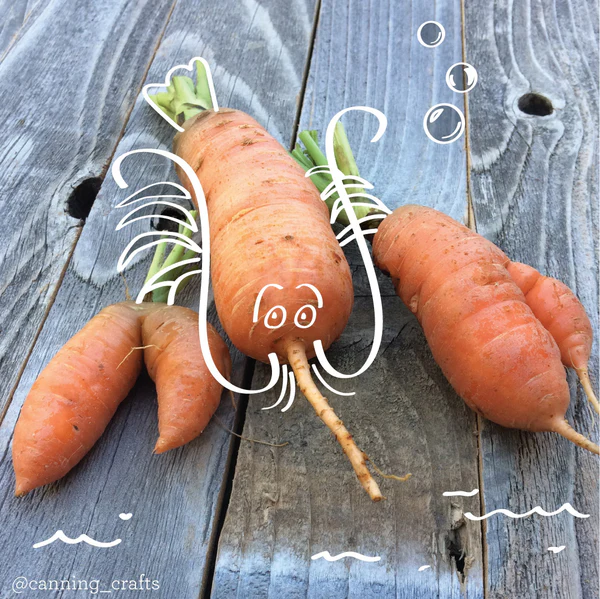
Aster yellows disease also causes deformities including secondary roots. This disease is caused by a mycoplasma organism carried to plants by the aster or six-spotted leafhopper. While the disease affects many other plants, carrots are often the most affected. The first symptom is yellowing leaves, then plants are stunted. Taproots become very hairy, pale in color, and bitter tasting. Affected carrots are may be inedible because of the taste.
Additional Reading
ATTRA Sustainable Agriculture has a handy PDF download on organic potting soil mixes. They have tips on making your own potting soil mix with additional info on fertilizers.



No comments:
Post a Comment